With twilight beginning to fall on the little French village of Barjac, I began my tour of La Ribaute ~ 40 hectares of the German artist Anselm Kiefer's making ~ which would conclude at sunset the following day without me having managed to visit all the towers, over and underground tunnels, crypts in a permanent state of transformation, an amphitheatre and pathways planted with sculptures that make up this extraordinary place, a place that is emotive for its grandeur, for its limitless space and for its eerie mystery.
Author: Elena Cué
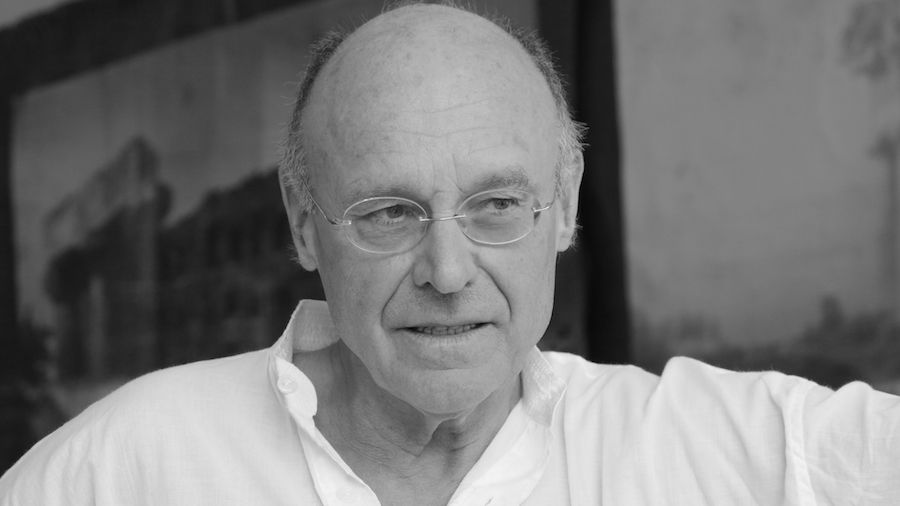
Photograph: Waltraud Forelli
With twilight beginning to fall on the little French village of Barjac, I began my tour of La Ribaute ~ 40 hectares of the German artist Anselm Kiefer's making ~ which would conclude at sunset the following day without me having managed to visit all the towers, over and underground tunnels, crypts in a permanent state of transformation, an amphitheatre and pathways planted with sculptures that make up this extraordinary place, a place that is emotive for its grandeur, for its limitless space and for its eerie mystery.
Anselm Kiefer is one of the most relevant artists of today.
I come back from the amphitheater extremely impressed. In fact, I am overwhelmed by everything. I will need a lot of time to assimilate it all.
The amphitheater developed in the same way a painting does. I had a big wall where all the big paintings are, and I thought, why not have a little grotto inside. So, we made some containers, we put them together to form a niche, we continued one floor after another and it worked just like a drawing, step by step.
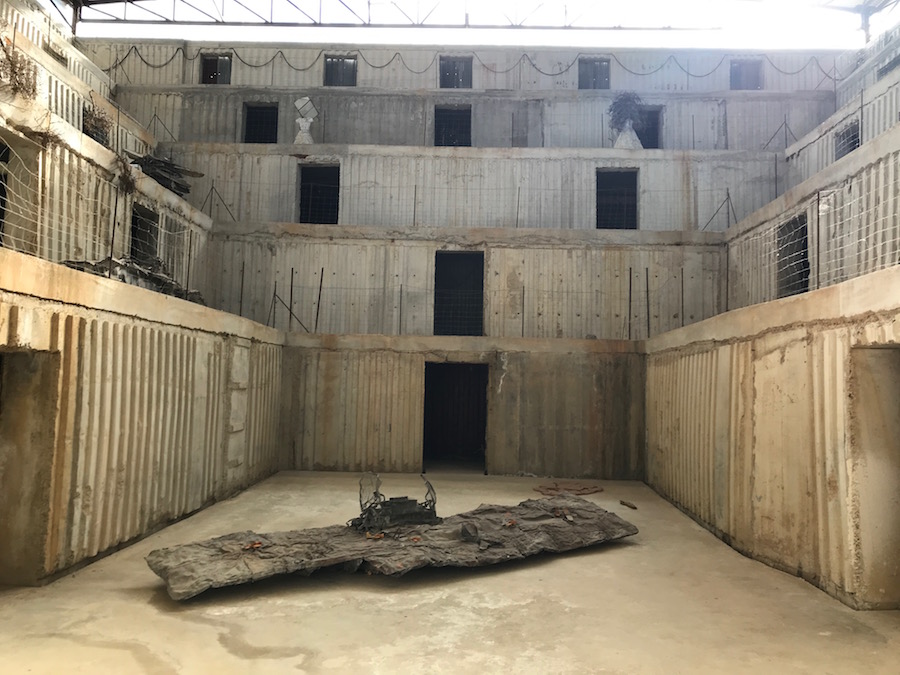
Amphitheatre. Photo: Elena Cué
You were born in 1945 in the twilight of World War II.
I was born in the cellar of a hospital. That is where my mother gave birth to me and that same night our house was bombed.
Your toys were ruins and bricks, which you have gone on to use in your work, both as materials and as concepts. Are you still playing with those ruins?
Ruins are the most beautiful thing and because children do not judge, they just take them and play with them. They are for me not an end but a beginning. Sometimes, I knock down a tower by dismantling a piece just to watch how it falls. It is beautiful to see a tower, from which the keystone has been removed, reflecting if it wants to fall, how it hesitates; then everything goes very quick and with great noise to the ground. The feeling is comparable to that of starting an airplane. Full throttle is engaged. The airplane quivers with the power that wants to bring it forwards while the brakes still hold it in place, the machine, getting faster and faster, finally lifts itself into the sky.
At a time when Germany was spiritually and materially devastated, what were the values you grew up with?
I had a very authoritarian education because my father was an officer. On one side there was the authoritarianism of the Catholic Church and on the other, that of my father who was also my teacher. But my father also showed me the painters that were ostracized during the Third Reich and, in the earliest years of my childhood, lead me to painting and drawing.
You said that building Barjac was something that rebelled in retrospective. First was the experience and then the concept...
If you mean whether my work follows a thought out concept then the answer is: of course. I always have a concept, otherwise I wouldn’t be able to start. However, during the work and over the course of days, weeks or years, the concept changes. The concept is necessary but not important.
What do you feel when you look at La Ribaute?
I feel it is unfinished.
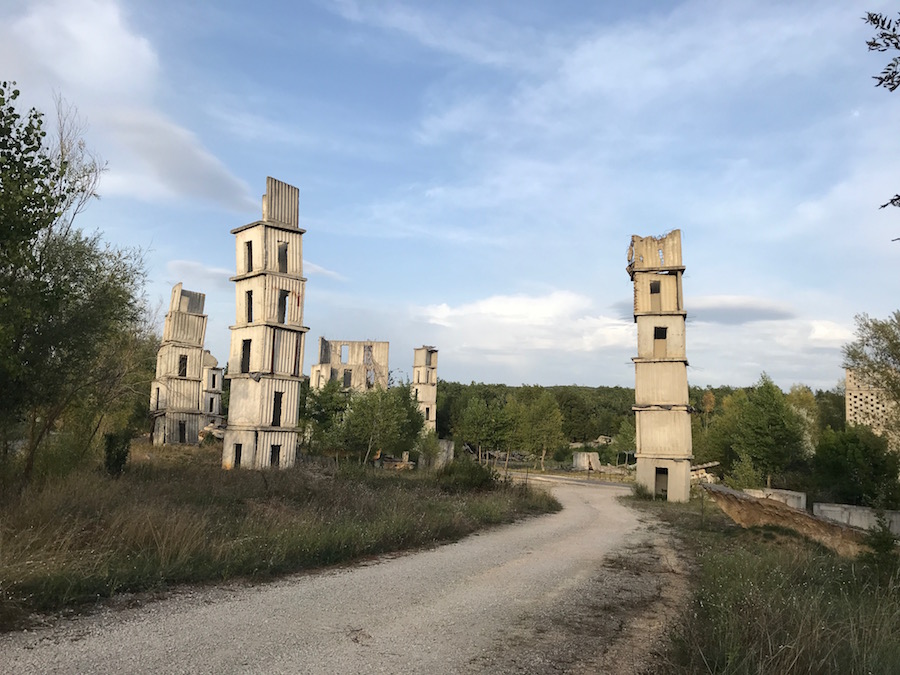
La Ribaute, Barjac. Anselm Kiefer. Photo: Elena Cué
What particular need led you to build something so unique in Barjac?
When I moved to France, my idea was to no longer have assistance from anybody. I didn’t want an office, I wanted to simplify my practice and to do everything on my own. I wanted to make very light paintings that I could roll and take anywhere. I wanted to work by myself, without any assistance. It was like a cultural revolution. Leave everything behind you, stop painting and start over again!
Here architecture, paintings, sculptures, and even music concerts come together. Are you trying to recreate Wagner’s concept of Total Work of Art?
I do not use the word “gesamtkunstwerk”. It has an uncomfortable connotation. I would rather speak of a work in progress. The most important is not the result but the ephemeral, the ever flowing, that which does not come to an end.
In 2011, you designed the scenography for the opera Elektra at the Teatro Real in Madrid. Do you intent to collaborate on another opera?
Yes, when the right piece, and a director with whom I share an aesthetic, come together. Klaus Michael Grüber, with whom I collaborated on Oedipus at Colonus at the Burgtheater in Vienna and Elektra in Naples, was for me a great match. He, unfortunately, passed away during pre-production.
You have said that in your childhood boredom helped you become a philosopher. Do you think that a state of boredom could be really creative?
Boredom is the beginning of philosophy. If you are active, you do not reflect. Heidegger has a lecture series on boredom. He says when you are invited to an event and it is a little bit boring, you become aware of the fact you are. It becomes clear what it is to be.
Which philosophers do you identify with?
Roland Barthes, Johann Gottlieb Fichte, Martin Heidegger, Leibniz, Carl Schmitt, Gustav Radbruch, Feuerbach…
What is it that normally forces you to think and create?
I do not paint because the canvas is empty or because I have nothing else to do. I start painting when I have a shock. When I am overwhelmed by something that moves me, something that is greater than me. It can be a real experience with a person, a landscape, a music piece or with a poem. Critics say that I aim to overwhelm but in reality, I am the one who is constantly overwhelmed. That is what happens when I start to work. If you are not feeling overwhelmed, why are you alive? We are here to be overwhelmed otherwise, there is no reason to be.
Where does your inspiration come from?
If you ask writers, they will tell you that all the material they have comes from their childhood. The same is true for me.
You said that you have always been drawn to the impossible. How many times have you tried to achieve the impossible?
You cannot achieve the impossible. You can only dream of it and try it. The word achievement is difficult because it is always a process. I could never say something is an achievement; it is only in our heads.
Your work is full of mythological references from Germany, Ancient Greece, Ancient Egypt and Kábbalah, among others. Have you found an element of unity between them?
Yes, all mythology is connected. For example, the Norse legend of Wayland the Smith, who was captured by the king and could not escape. That same legend exists in Egypt and Northern Germany. You can find connections in all of mythology.
You have been labeled as one of the biggest representatives of neo-expressionism. What does this artistic style provide that others do not?
I am fundamentally against style.
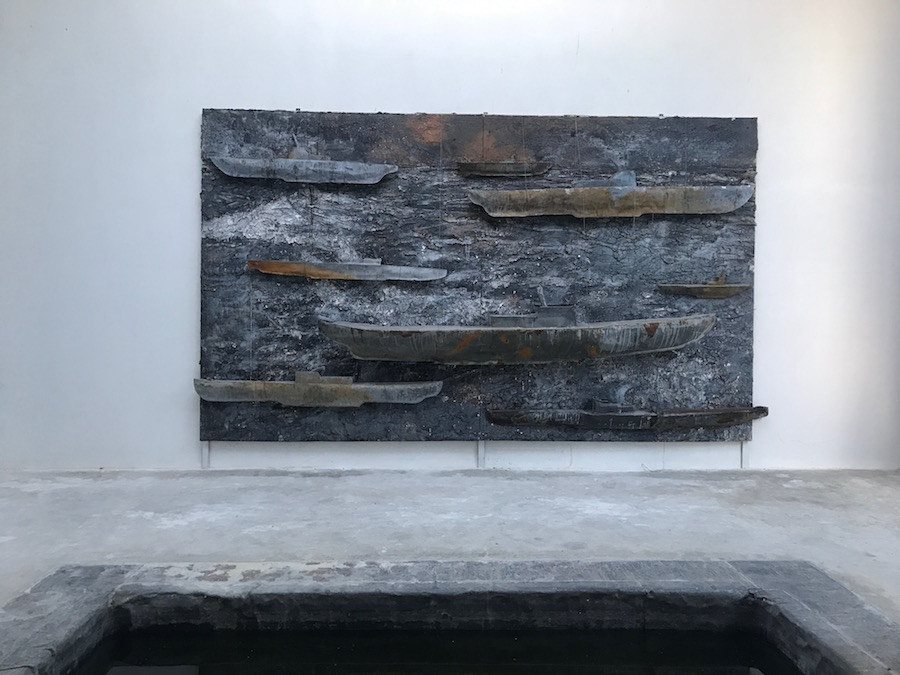
La Ribaute. Barjac. Anselm Kiefer. Photo: Elena Cué
What motivated you to include figurative objects such as submarines, sunflowers, tulips, etc, in your work? Why did you begin to combine painting and sculpture?
It is a question of reality. When I introduce an object, I do not create any additional illusion. What I make is what it is. Sometimes I want to be direct. Objects have their own spirituality.
Why did you choose painting instead of writing?
I cannot say that it was a conscious decision. It came to me this way. Throughout my career I have always had moments when I thought about writing a book. I have a lot of book concepts in my diary but I cannot say I have decided on one.
Then, is it a balance between writing and painting?
Yes, but it is not writing, it is rather experimenting with oneself. I do not write fiction or poetry. Poetry is something different; you arrange the words in a certain combination that has never been seen before.
What about painting?
It is recreation as well.
Do you reflect yourself better through painting than through writing?
Writing helps us analyze what we have done. Besides, it is a form of self-assessment.
Do you ask yourself if you are satisfied?
All the time.
How do you feel when you read your own work?
My writings are for me a way to remember. The new arises from memory.
And when you look at your paintings in retrospect?
Exactly like Paul Valery, sometimes I think they are marvelous, at other times they make me feel desperate.
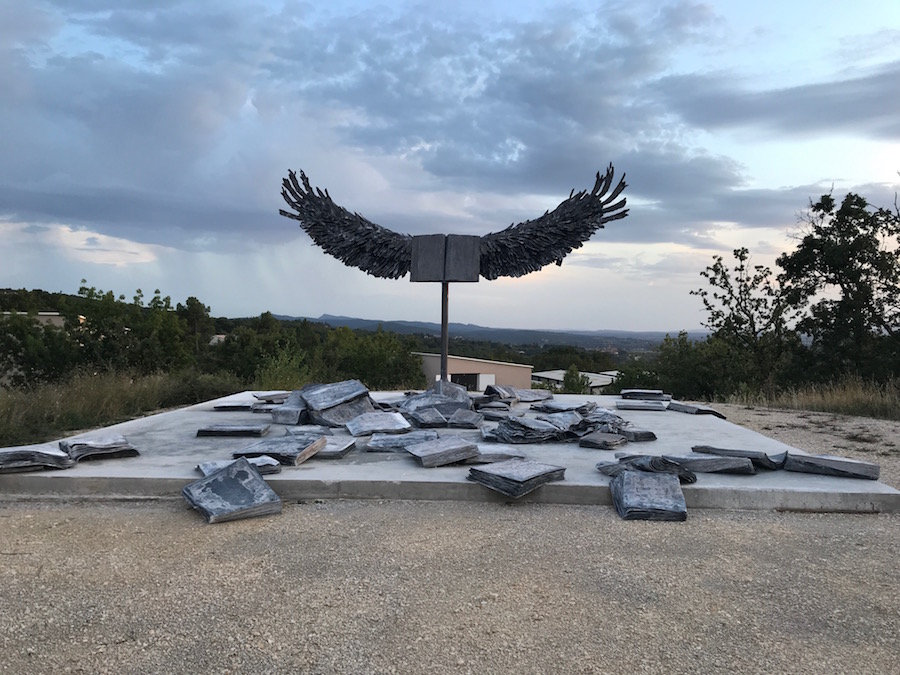
La Ribaute. Barjac. Anselm Kiefer. Photo: Elena Cué
You have said that art is closest to the truth. Could you explain this concept?
Art is even closer to the truth. It is truth.
Do you think that through art you are able to express who you really are?
I am not important. I am sometimes me and then many others.
The Holocaust is very significant in your work. It is depicted through a wide range of symbolism. What is your objective with the representation of the darkest moment in your country’s history?
When I was growing up, the Holocaust did not exist. No one spoke about it in the 60s. I felt that there was something hidden. By accident, I got a disc with the voices of Hitler, Goebbels and Goering. It was made by Americans in order to educate Germans. I was so fascinated by Hitler that I began to study. I wanted to know what it was all about.
Was it necessity or curiosity that prompted you to investigate it further?
It was curiosity. When you begin to study what happened during those times it is so horrible that it is hard to imagine. Only in 1975 in Germany did they finally start showing exactly what had happened during the Holocaust. Ever since then the Germans have been quite good at revealing it. The French are still hiding a lot of it. At the time, Austrians wanted no relation with anything German. An Austrian journalist complained to me that I put Austrians and Germans in the same category. Back then Hitler was surprised as he thought he would have to fight Austria in order get an unification. It turned out they all wanted it already. They were even more efficient and accurate with their Jewish lists than the Germans. The French forcefully sent about 100,000 people to work in the German weapon industry. I never believed that there was a point zero. Democracy was first brought by the Americans.
During the keynote address of your lecture series at the Collège de France, you said that you learned most about art through reading The Thief's Journal by Jean Genet. Could you explain why?
I was so overwhelmed by his writing. He literally turned everything upside down. He would take the most honorable thing you could do and stick it deep in the swamp, whilst the most horrible thing, for example, to kill someone, he considered a piece of art. He turned everything upside down and this was fantastic to me.
You said: “The alchemy of transforming the abject into art is the true magic”. Why are you so attracted to alchemy?
Alchemy is the first step to science, chemistry and physics. It is the teaching of transmutation. It is also a spiritual movement. People always say that alchemists try to turn lead into gold but the real alchemists do not want to do that. It is a picture to transform yourself on another level. Alchemists are the first natural scientists.
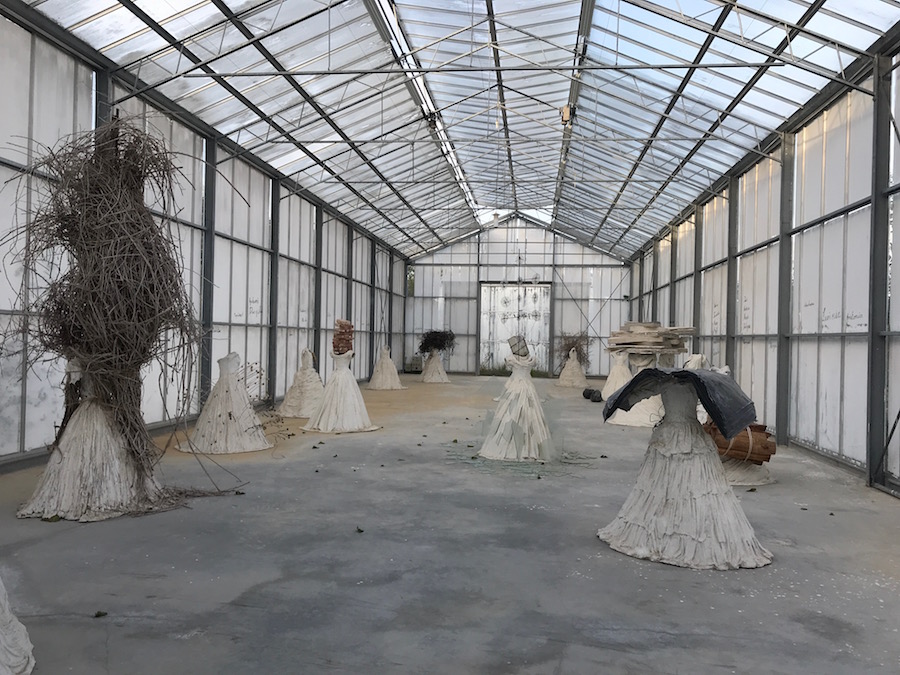
La Ribaute. Barjac. Anselm Kiefer. Photo: Elena Cué
You were photographed dressed as a woman for the work Jean Genet. You depicted women in Les Femmes de la Révolution, Les Reines de France, Les Femmes de L'Antiquitié, en Margarethe y Shulamith. What do women represent in your work?
I am always overwhelmed by women and I think they are more connected with the roots of earth. They are more powerful than men.
You say that art should be subversive and disturbing. What do you think about the relationship between art and society?
I am going to refer to Jean Genet again. He is subversive because he preaches that stealing and killing are the best things; that you have to become a traitor. Art can never be moralistic. Art cannot be a judgement of society because morals are connected to the times. Let us go back to the times of Greek democracy. In those days you could have slaves. Even Aristotle said that in order to be a good philosopher you have to be rich and have slaves. It is all connected with certain times. Artists should not be connected with a specific moral behavior.
You have spoken extensively about the artist being a destroyer and a creator. It is key in your work. Could you elaborate on this concept?
The artist is an iconoclast, he or she destroys all the time. There is art and anti-art. If the artist is not an iconoclast then he is not really an artist. You can see it through the history of art. I destroy what I do all the time. Then I put the destroyed parts in containers and wait for the resurrection.
The idea of infinity is implicit in your work and provokes a sense of the sublime. Do you intend to do so?
Eichendorff in his poem, sends his soul out in the world and then it comes back to him. It is a never-ending circle. I follow the philosophical system which includes emotion, will and reflection. Eichendorff describes a globe as a sphere; a kind of a sphere that gives immunity. Before you are born, you share a sphere with your mother, you are connected in the womb. This is the first sphere. Then the sphere gets wider as you meet more and more people. The romantic sphere is endless. It goes to the infinite and comes back.
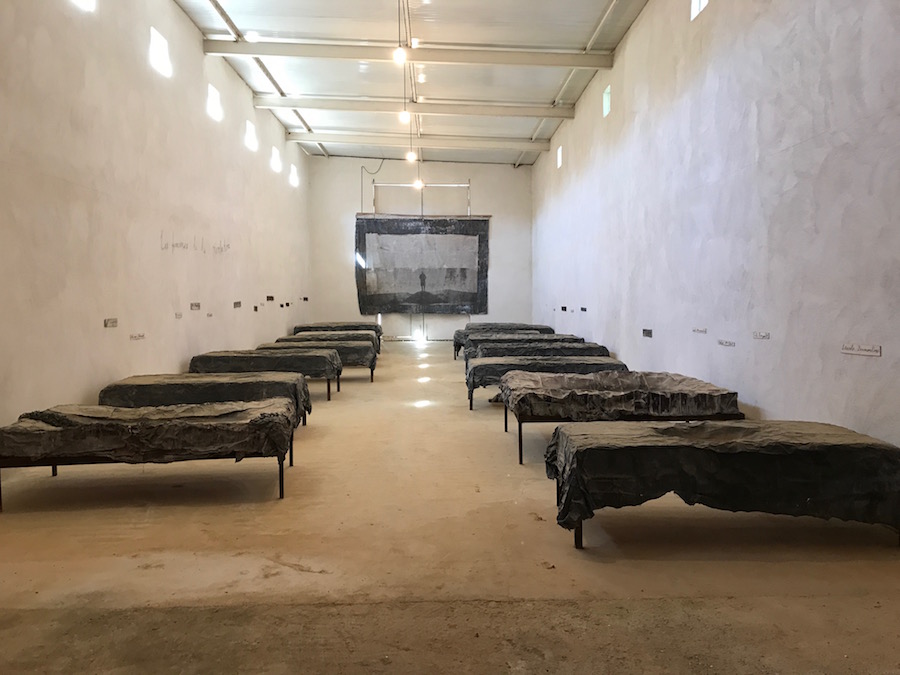
The Women Of The Revolution. Anselm Kiefer. Photo: Elena Cué
The landscape with your figure in the middle of the Les Femmes de la Révolution room reminds me of Friedrich's landscape and the concept of the sublime. Do you look for the sublime?
It is not really my world. Who invented the word sublime?
The first to use that term was a Greek from the Hellenistic era, but it became popular at the beginning of our time, and among others Kant who wrote a book about the beauty and the sublime.
There is a wonderful quote by Kant: “Two things fill the mind with ever new and increasing admiration and awe, the more often and steadily we reflect upon them: the starry heavens above me and the moral law within me.”
Are there things that have come to the surface through your work that you would have preferred to keep hidden?
No. There is so much that is hidden. You can reveal as much as you want and still never get to the center.
What is your opinion of the first Documenta and Nazi Degenerate art.
I looked through all the Nazi paintings and architecture and did not find a decent painting. I studied them all. I thought that there might be something hidden but they were all nonsense. However, architecture was different. It was not Nazi architecture per se, it was the architecture of the time because it was connected to tradition. You can see the same type of architecture in Paris and Rome. People wrongfully view that type of architecture as Nazi. For example, they say architecture should not overwhelm people. But why not? We are overwhelmed all the time, look at the stars, for instance. An architect must show this. I like Karl Marx Allee in Berlin.
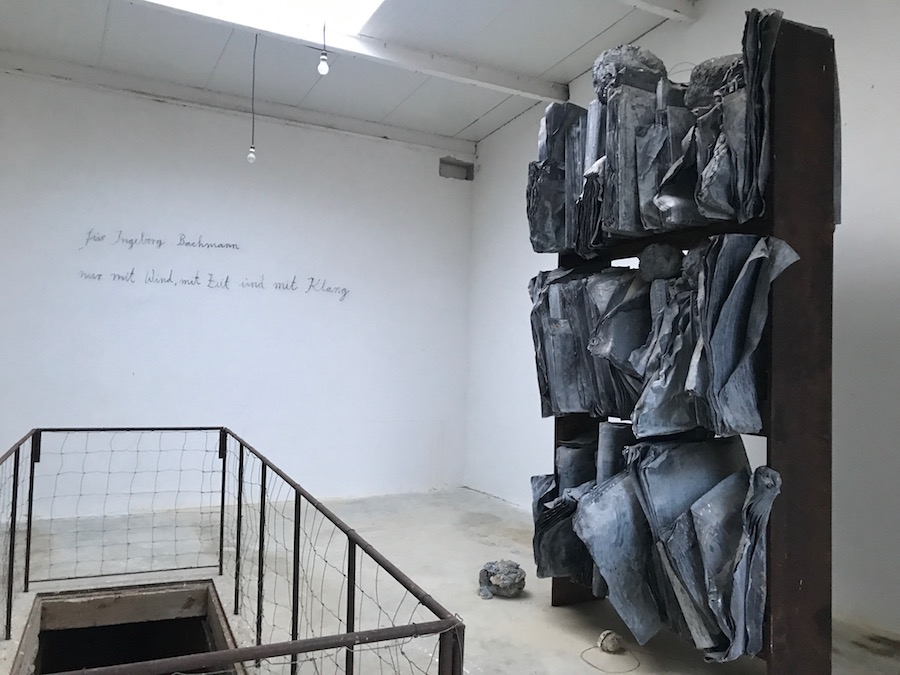
Library. Anselm Kiefer. Photo: Elena Cué
What is your relationship to books? What significance do books have in your life and work?
Books I have made represent sixty percent of my work. I still have most of my earlier books as they were never really for sale.
And in relation to painting?
A painting is different from a book because you can stand in front of it and see an impression of something. When reading a book, you turn the pages; it is connected to time. I like to write books because I can show the process. When I do a painting, I always have a war in my head. At each stage of the painting I have a hundred different possibilities to choose from. For instance, when Picasso was stuck during the creative process he used to tell his wife, Francoise Gilot, to copy his painting so he can come up with a different outcome. When you are painting you always have to make decisions. As you make a choice to go a certain way, you give up a hundred other possibilities.
Always Unfinished - Anselm Kiefer in L.A. - Courtesy of Rick Meghiddo
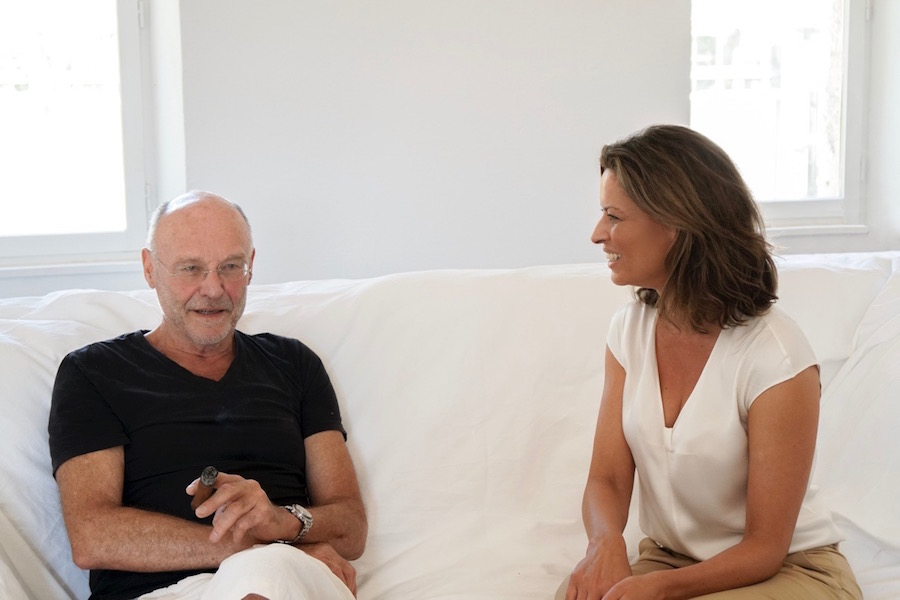
Anselm Kiefer with Elena Cué. Photo: Waltraud Forelli
(Introduction translated from the Spanish by Shauna Devlin)



